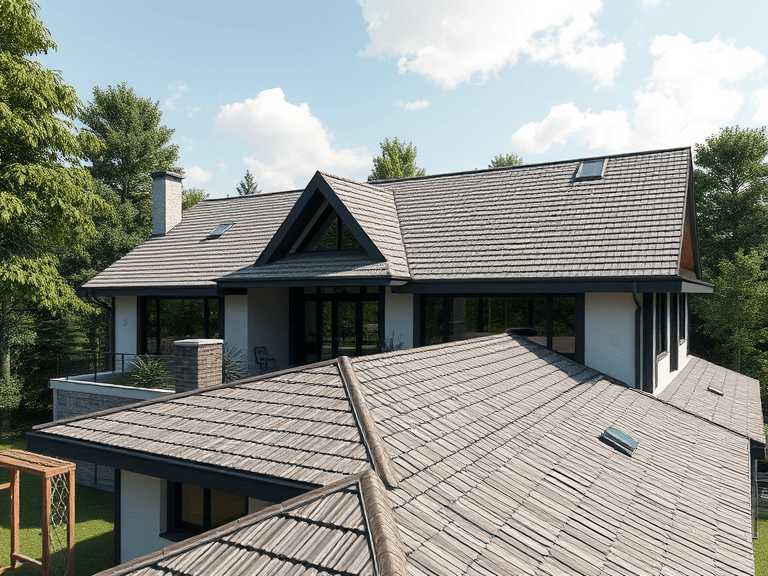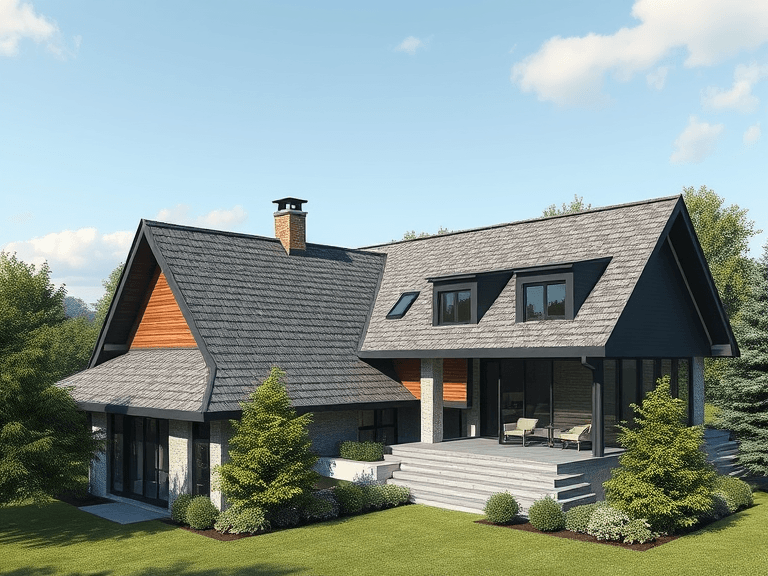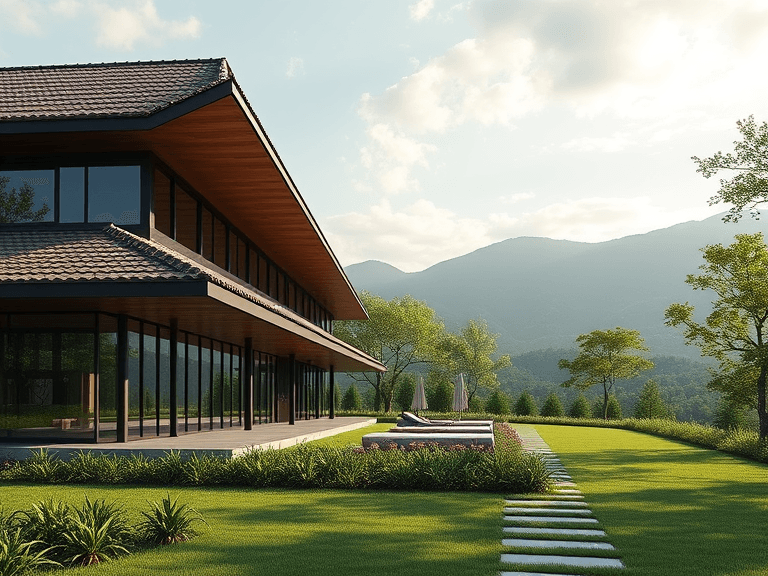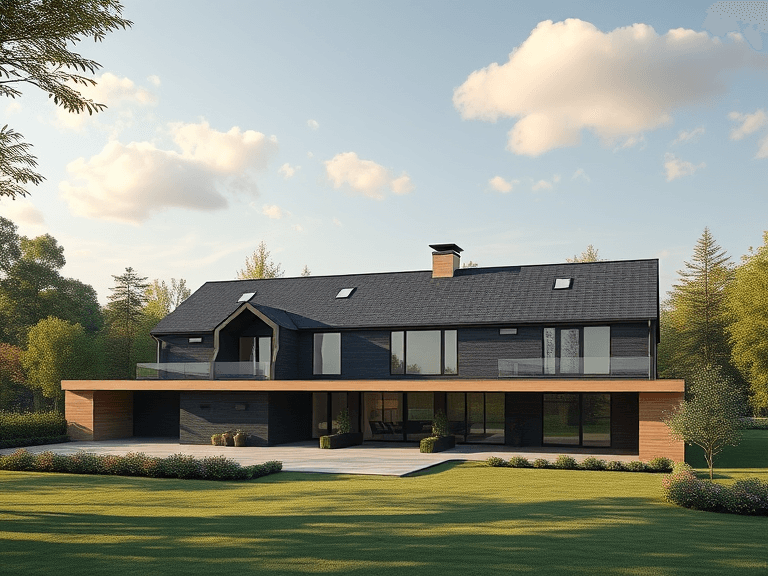
Roofing materials play a critical role in the construction and longevity of residential structures. They not only contribute to the overall aesthetics of a home but also significantly affect its structural integrity and energy efficiency. Selecting the right roofing materials can influence attributes such as insulation, durability, maintenance requirements, and even resale value. As homeowners embark on the journey of exploring various roofing materials and styles, understanding these factors is essential.
The evolution of roofing materials has been remarkable over the years. Early roofs were primarily made from locally available materials, such as thatch, wood, or clay tiles, reflecting the geographical and climatic considerations of the time. In modern construction, however, a wide variety of materials are available, including asphalt shingles, metal, slate, and composite options. Each type brings its own set of benefits and drawbacks, shaping the choice for homeowners based on specific needs and preferences.
Different climate conditions further impact the selection of roofing materials. For instance, homes in regions with heavy snowfall may require steep-pitched roofs and durable materials that can withstand the weight of snow, while areas prone to high winds necessitate stronger fastening methods and materials like metal roofing. Additionally, energy efficiency has become an increasingly important factor in recent years, leading to the development of roofing technologies that can help regulate indoor temperatures and reduce energy costs.
As homeowners consider various roofing materials, it is essential to weigh not only the cost and appearance but also the performance characteristics relative to their local climate and environmental conditions. This approach ensures that the chosen roofing solution not only enhances the home’s beauty but also provides long-lasting protection and energy efficiency.
Types of Roofing Materials
When it comes to exploring various roofing materials and styles, homeowners are presented with a multitude of options. Each type of roofing material has its unique benefits and drawbacks, which can significantly influence both the aesthetic and functional aspects of a home.
Asphalt shingles are one of the most popular roofing materials due to their affordability and ease of installation. They are available in a variety of colors and styles, making them a versatile choice for many homeowners. However, their lifespan is typically shorter, averaging about 20-30 years, and they may require replacement sooner in areas with extreme weather conditions.
Metal roofing is gaining traction for its durability and energy efficiency. Available in materials such as aluminum, steel, and copper, metal roofs can last upwards of 50 years. They are resistant to extreme weather and provide exceptional protection against elements like hail and wind. On the downside, they can be more expensive than traditional materials and may require specialized installation techniques.
Wood shakes convey a natural aesthetic that many homeowners find appealing. This roofing style is often made from cedar, and its rustic charm is hard to replicate. However, wood shakes require regular maintenance to prevent damage from rot, pests, and fire hazards, which might make them less desirable for some.
Tile roofing is notable for its longevity and distinctive appearance. Clay or concrete tiles can last more than 50 years and are known for their resistance to fire and moisture. On the contrary, tile roofs are quite heavy, necessitating a sturdy structure beneath, and they can also be more expensive to install.
Lastly, slate roofing is considered one of the most durable options available. Its natural stone quality provides unique beauty and exceptional longevity, often exceeding 100 years. However, slate can be costly, both in materials and installation, and requires skilled labor to ensure proper placement.
Understanding these roofing materials can help homeowners make informed decisions based on factors such as cost, installation complexity, and personal preferences.
Roofing Styles and Their Characteristics
When considering roofing options for a home, exploring various roofing materials and styles is essential to ensure that the aesthetic and functional needs are met. Roofing styles not only influence a home’s appearance but also impact its durability and maintenance considerations. Several popular roofing styles offer unique characteristics that cater to different architectural preferences.
One of the most recognized styles is the gable roof, characterized by its triangular shape formed by two sloping sides that meet at a ridge. This design is not only visually appealing but also effective in facilitating rain runoff and providing ample attic space. Gable roofs are commonly found in traditional and modern homes, making them a versatile choice for various neighborhoods.
Another noteworthy style is the hipped roof, distinguished by slopes on all four sides that come together at the top. This design offers increased stability against wind and weather conditions, making it a popular option in areas prone to storms. The hipped roof also allows for more spacious interior rooms and can enhance the architectural interest of a home.
In contrast, flat roofs present a sleek, minimalist appearance that is often associated with modern and commercial buildings. While flat roofs can provide additional outdoor living space, they require proper drainage systems to prevent water accumulation. This roofing style is typically constructed with materials that are tailored to withstand both standing water and UV exposure.
Lastly, the mansard roof, which features four sloped sides creating a distinctive profile, allows for maximum living space within the structure. This style, often associated with French architecture, can imbue a home with an elegant character while also permitting the incorporation of dormer windows for natural light.
Each of these roofing styles demonstrates how exploring various roofing materials and styles can lead to both functional benefits and an enhancement of a home’s overall design. Homeowners should consider how these styles align with their preferences and the architectural direction of their property.
Environmental Impact of Roofing Materials
When selecting roofing materials, it is essential to consider their environmental impact. Different roofing materials come with varying degrees of sustainability and recyclability, which ultimately affect their carbon footprint during production and installation. Traditional materials such as asphalt shingles, while widely used, are often criticized for their non-biodegradable properties and significant energy consumption during production. This raises concerns regarding their long-term impact on landfills and the environment.
On the other hand, eco-friendly options have emerged that prioritize sustainability without sacrificing durability or aesthetics. For instance, metal roofing is gaining traction as a sustainable alternative due to its high recyclability and long lifespan. Made primarily from recycled materials, metal roofs can last over fifty years, reducing the need for frequent replacements and minimizing waste. Moreover, many manufacturers are adopting greener production processes to lower their overall environmental impact, reflecting a commitment to sustainability in the roofing industry.
Another viable option in exploring various roofing materials is using solar shingles or tiles, which not only provide roofing but also generate renewable energy. This innovation contributes to reducing the overall carbon footprint of a home while providing long-term energy savings. Additionally, green roofs or living roofs—comprised of vegetation—are designed to capture rainwater, improve air quality, and provide insulation, contributing to urban biodiversity.
As new technologies and materials continue to emerge, it is vital for homeowners to evaluate their choices based on sustainability and environmental stewardship. By opting for eco-friendly roofing solutions, homeowners can make a significant positive impact, ensuring a greener future while also enhancing the aesthetic and functional aspects of their homes. Ultimately, the choice of roofing materials should align with both personal values and environmental considerations.

Cost Considerations for Roofing Materials
When embarking on the journey of exploring various roofing materials and styles, one of the most critical factors to consider is the cost associated with each option. The initial expenditure can vary significantly depending on the material selected, thereby influencing long-term financial planning for homeowners. Traditional materials such as asphalt shingles offer a budget-friendly entry point, typically costing less upfront compared to alternatives like slate or metal roofing. However, it is crucial to consider not only these initial costs but also the longevity and durability of the materials chosen.
Long-term value plays a significant role in the overall assessment of roofing materials. Higher upfront costs for materials known for their durability, such as tile or metal, can lead to reduced maintenance expenses and a longer lifespan. For instance, while asphalt shingles may need replacement every 15 to 20 years, metal roofs can last upwards of 50 years with proper care. This extended lifespan can result in substantial savings over time, particularly when factoring in repair and replacement expenses.
In addition to initial and long-term costs, homeowners should take energy efficiency into account when evaluating roofing options. Certain materials can contribute to better insulation and lower energy bills. Cool roofs, designed to reflect more sunlight, can lead to significant savings on cooling costs over the summer months, representing another crucial financial consideration in the overall roofing strategy.
Ultimately, when exploring various roofing materials and styles, it is essential to weigh the initial investment against potential savings in maintenance and energy expenses. By thoroughly analyzing each roofing option, homeowners can make informed decisions that align both with their budget and their long-term financial goals.
Local Climate and Its Influence on Roofing Choices
The selection of roofing materials and styles is heavily influenced by local climate conditions. Each region experiences unique weather patterns, including temperature fluctuations, precipitation, humidity, and wind conditions. Understanding these elements is vital when homeowners are exploring various roofing materials and styles for their properties. For instance, areas that experience heavy snowfall require roofing systems that can withstand significant weight. Roofs in such climates are often constructed with steep pitches to facilitate snow runoff, while materials like metal and asphalt shingles, known for their durability against the accumulation of ice, are preferred.
In contrast, regions with high humidity and frequent rainfall face challenges related to mold and algae growth. Therefore, homeowners in such areas might consider roofing options such as ceramic or concrete tiles, which are less susceptible to moisture damage compared to wood shakes or standard asphalt. Furthermore, materials that facilitate proper ventilation are crucial in humid climates to prevent heat buildup that can harm a roofing structure’s longevity.
<padditionally, a=”” and=”” architectural=”” areas,=”” as=”” both=”” can=”” coastal=”” enhance=”” environments.<=”” for=”” high=”” home=”” hurricanes=”” in=”” longevity=”” material=”” materials=”” metal=”” necessitate=”” of=”” or=”” p=”” plays=”” products=”” prone=”” provide=”” rated=”” regions=”” resistance=”” role=”” roofing=”” roofing,=”” safety=”” selection.=”” severe=”” shingles=”” significant=”” specifically=”” storms=”” strong=”” such=”” that=”” the=”” to=”” uplift.=”” use=”” wind=””>
Finally, it is also important to consider localized climate trends, such as temperature extremes or susceptibility to wildfires, when deciding on roofing materials. Choosing the right roofing system based on climatic conditions not only ensures durability and aesthetic appeal but also contributes to energy efficiency and sustainability in the long term. Consequently, homeowners should take the time to research and understand how local climate influences the best options when exploring various roofing materials and styles.
Installation Techniques and Best Practices
The installation process of roofing materials is crucial for ensuring the longevity and effectiveness of a roof. Different materials, such as asphalt shingles, metal roofing, and tile, require specific techniques and approaches during installation. For instance, asphalt shingles are typically installed in overlapping rows to create a watertight seal, while metal roofing necessitates precise fastening to prevent leaks and ensure stability during adverse weather conditions. Understanding these techniques is vital for any homeowner considering exploring various roofing materials and styles.
Equally important to the installation process is the selection of skilled professionals. Engaging experienced roofers not only aids in the proper installation of roofing materials but also minimizes the likelihood of common pitfalls, such as inadequate sealing or improper material alignment. It is advisable to thoroughly vet contractors by checking their credentials, previous work, and client references to mitigate the risk of complications during installation.
Inspections play a significant role in a successful roofing project. Before installation, a comprehensive inspection of the existing structure should be conducted to ensure it can support the new roofing materials. Post-installation inspections are equally significant; they confirm that the work meets industry standards and provide homeowners with peace of mind. Warranties should also be discussed with contractors, as they offer protection in case of premature failure of roofing materials. A robust warranty can cover both labor and materials, assuring the homeowner that their investment is safeguarded against future issues.
In conclusion, understanding the installation techniques and best practices is essential for homeowners aiming to explore various roofing materials and styles. By prioritizing skilled professionals, comprehensive inspections, and reliable warranties, homeowners can ensure their roofing projects are successful and durable.
Trends and Innovations in Roofing
The roofing industry has seen significant advancements and trends that reflect the ever-evolving needs and preferences of homeowners. One of the most prominent trends is the rise of green roofs, which contribute to sustainability and energy efficiency. These roofs are designed to support vegetation, providing insulation and reducing urban heat while also promoting biodiversity. Moreover, homeowners benefit from reduced energy costs associated with temperature regulation in the building.
Another notable innovation is the introduction of solar shingles. As renewable energy becomes increasingly critical in reducing reliance on fossil fuels, solar shingles are gaining popularity. These innovative products not only serve as a roofing material but also as a means of harnessing solar energy. This dual functionality makes them an appealing option for environmentally conscious homeowners looking to decrease their carbon footprint while increasing the overall efficiency of their property.
Technological advancements have also improved roofing performance and durability. For instance, many modern materials now feature enhanced weather resistance and longer lifespans, reducing the frequency of repairs and replacements for homeowners. Additionally, smart roofing systems, equipped with sensors and IoT devices, offer real-time monitoring and maintenance alerts. This technology enables early detection of potential issues, ensuring the roof remains in optimal condition and prolonging its life. Homeowners can save money in the long run by adopting these innovative solutions.
Staying informed about emerging trends and innovations in roofing is crucial for homeowners who wish to enhance their property. Engaging with local roofing professionals, attending home improvement expos, and following online resources will provide valuable insights into the latest materials and styles available. Exploring various roofing materials and styles not only contributes to informed decision-making but also ensures homeowners can select the best options tailored to their specific needs and preferences.
Conclusion: Making the Right Choice for Your Home
When it comes to exploring various roofing materials and styles, homeowners have a wealth of options to consider. Each choice can significantly influence not only the aesthetic of the home but also its longevity, energy efficiency, and overall environmental impact. Key factors to weigh include personal preferences, budget constraints, and the specific climate of the region where one resides. Each roofing material comes with its unique set of advantages and disadvantages, making it crucial to conduct thorough research before making an informed decision.
The importance of aligning roofing choices with one’s lifestyle and values can’t be overstated. For example, eco-conscious individuals may prefer materials that offer sustainability, like recycled shingles or metal roofs, which can reduce the overall carbon footprint. Similarly, knowing the long-term costs associated with certain materials, such as maintenance and energy savings, may sway homeowners toward more durable and efficient options.
It is also essential to consider the architectural style of your home when exploring various roofing materials and styles. The right roofing can enhance the home’s curb appeal and increase property value. Therefore, before finalizing your decision, it’s beneficial to consult with roofing professionals who can offer insights tailored to your particular needs and preferences.
To assist in this critical decision-making process, here is a checklist for homeowners:
- Assess your budget and determine financial limits.
- Research different roofing materials and their long-term benefits.
- Consider the climate and environmental conditions of your area.
- Evaluate the architectural style of your home.
- Consult professionals for expert advice and recommendations.
Ultimately, by carefully exploring various roofing materials and styles while prioritizing personal needs, homeowners can make informed choices that align with their values and enhance the comfort and appeal of their homes.


